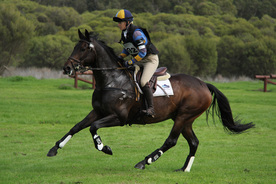
It’s a sight we see at many a horse event – hot, sweaty horses standing in line waiting for their turn at the wash bays. Debatably, it’s a great time for your horse to have a pick of grass and you a chat to your friend or debrief your round with a loved one, but what is happening on the inside of your horse?
While he may appear to be enjoying a pick of grass as he waits his turn for a wash, on the inside his temperature is rising and every degree counts. If a horse’s body temperature rises just 3 to 4 degrees from normal, the temperatures within working muscles may be as high as 43 degrees celcius. At this temperature the proteins in the muscle begin to cook and break down. Doesn’t sound ideal does it?
Animal and exercise physiologist, Professor Michael Lindinger explains: “It only takes 17 minutes of moderate intensity exercise in hot, humid weather to raise a horse’s temperature to dangerous levels. That’s three to 10 times faster than in humans.”
Horses are more susceptible to heat stress for several reasons. Most obviously, they are larger and have a higher percentage of active muscle than humans do during exercise. Muscles produce a lot of heat when they are being used.
While he may appear to be enjoying a pick of grass as he waits his turn for a wash, on the inside his temperature is rising and every degree counts. If a horse’s body temperature rises just 3 to 4 degrees from normal, the temperatures within working muscles may be as high as 43 degrees celcius. At this temperature the proteins in the muscle begin to cook and break down. Doesn’t sound ideal does it?
Animal and exercise physiologist, Professor Michael Lindinger explains: “It only takes 17 minutes of moderate intensity exercise in hot, humid weather to raise a horse’s temperature to dangerous levels. That’s three to 10 times faster than in humans.”
Horses are more susceptible to heat stress for several reasons. Most obviously, they are larger and have a higher percentage of active muscle than humans do during exercise. Muscles produce a lot of heat when they are being used.

 RSS Feed
RSS Feed
